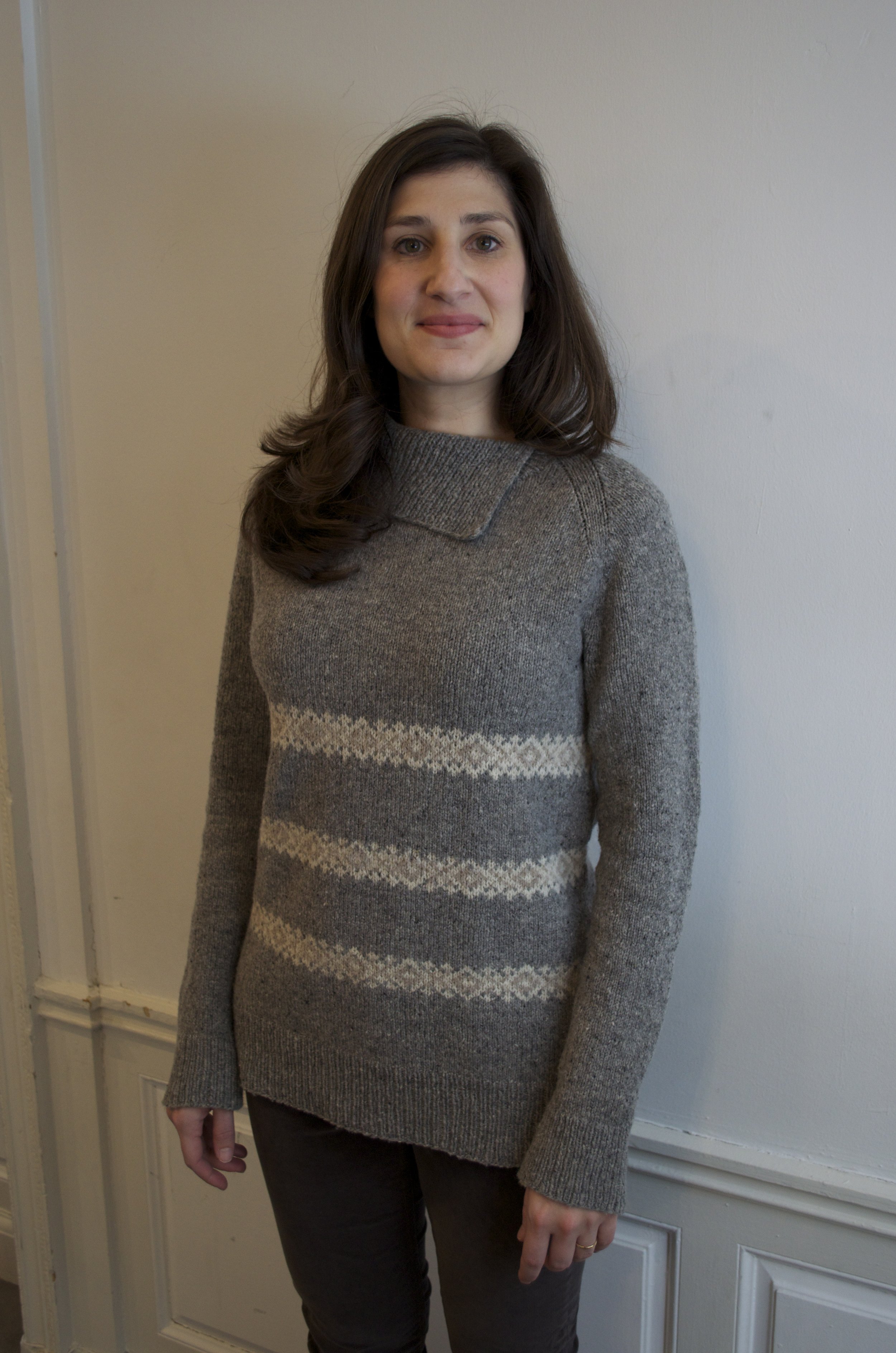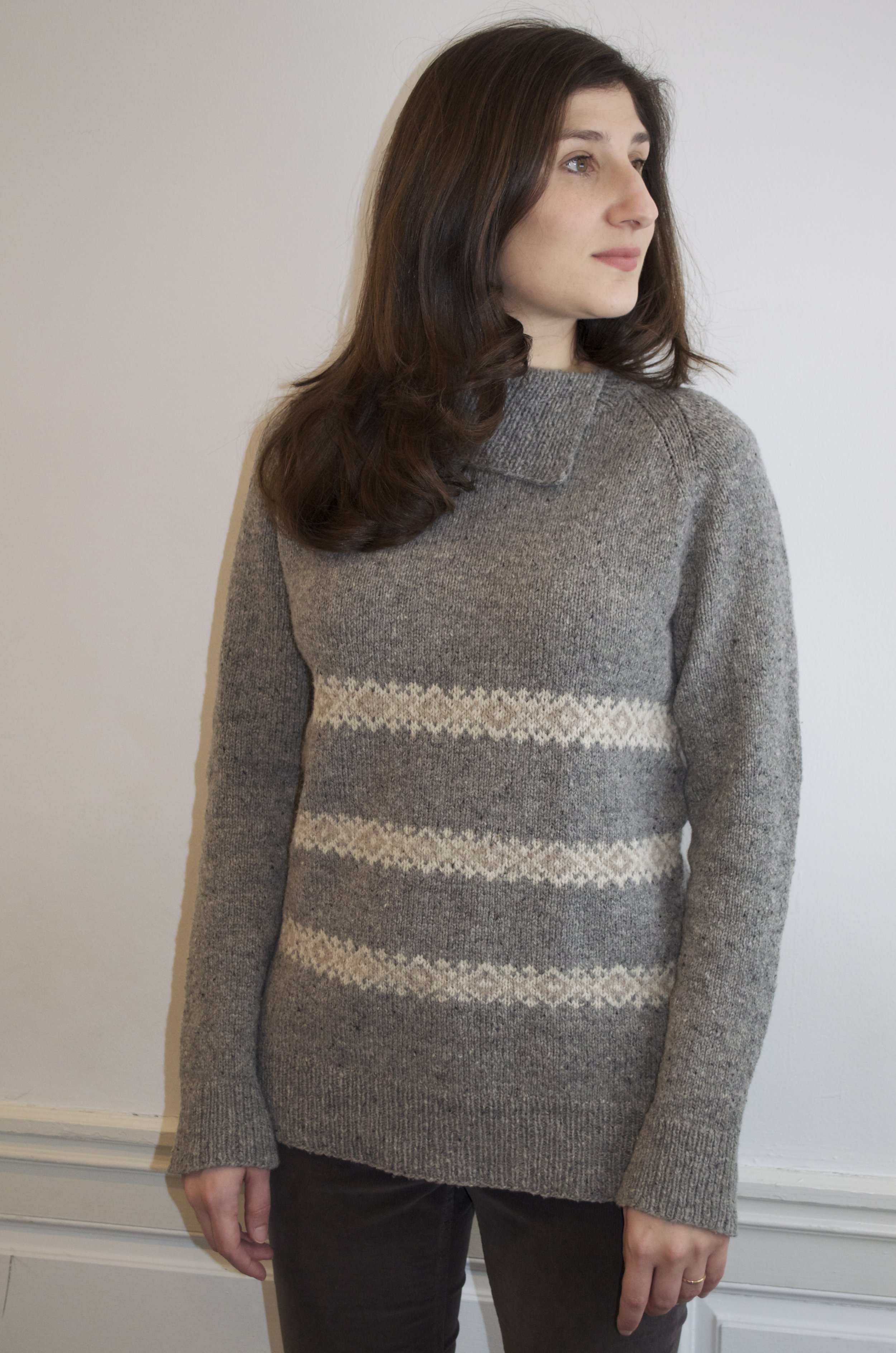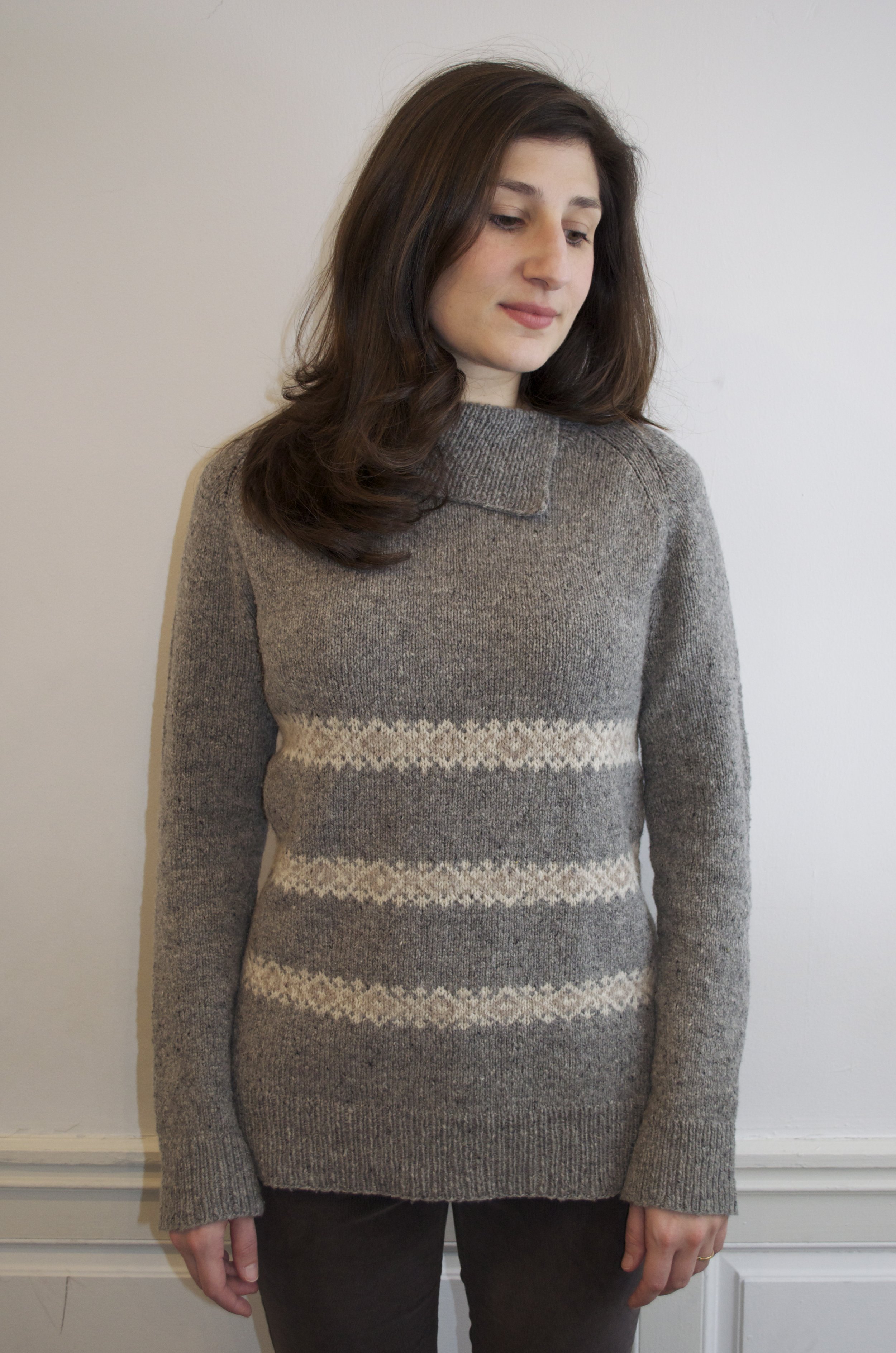New Design in Interweave Knits 2oth Anniversary Issue: The Botero Pullover
The 20th anniversary issue of Interweave Knits has just been released and it includes my first Knits design, Botero. When I was a new knitter and discovered Knits, I ordered an immense stack of back issues and would spend hours pouring over them. At that stage, I was thinking about whether I would ever be able to knit any of the beautiful patterns in those pages and now it’s hard to believe I have a pattern of my own being published with them. I’m particularly pleased to be in this anniversary issue along with a long list of designers I really admire.
Harper Point Photography
Botero is knit in Brooklyn Tweed Loft and is intended as a companion for a walk in the woods. I always have a working title for my designs and usually when a design goes to a magazine those titles are changed, but it might add something to this particular design to know that my name for it is Nuthatch. Nuthatch conjured up the light, fleet little birds in the woods and the colors of the understory in autumn, all of which served as inspiration for this sweater.
Harper Point Photography
As with most of my designs, the sweater is as much about how it feels as how it looks. If you’ve never knit with Brooklyn Tweed Loft before you are in for a treat. In fact, it’s a delight both to work with and to wear. It produces the lightest possible fabric and provides a warmth that is more akin to having a fluffy cloud around you than to wearing a sweater. Loft is magical to use in colorwork and the transformation that occurs during blocking with this yarn never ceases to amaze me. It’s hard to resist actually massaging the sweater in the water, that’s how eager I am to experience it blooming and softening.
My love affair with Loft began when I knit Stasis. Last winter was so mild, it proved the perfect sweater to wear; so much so that I could hardly bear a day not wearing it. So I knew there had to be another Loft sweater in my future. I spent a lot of time walking through the changing trees and thinking about the soft, understated colors of the woods and about a sweater that would celebrate the season, that would make you feel warm but light on your feet and ready to go out and explore.
The sweater is a relaxed raglan with a hint of waist shaping, a long, lean silhouette and a split turtleneck collar for added warmth options. I am a devoted fan of the split turtleneck as I think it creates a flattering frame for the face and it gives some flexibility over how warm you are. I have a few split turtlenecks in my collection now and when I’m feeling temperate I leave the neck splayed out around my shoulders and when I’m chilly bunch it up closer to my neck. This works particularly well in Loft which holds its shape beautifully. If I’m really feeling cold, I like to tuck a small cowl into the neckline. The virtue is that the turtleneck is there if you want to fold it up inside your coat for added protection but when you get somewhere overheated you don’t immediately start clawing at your neck in a desperate attempt to ventilate.
Harper Point Photography
Continuing my “Bit of Perspective” segment, I thought I would share what the sweater looks like on me. These were taken literally minutes before I sent this sweater off to the magazine so it’s not exactly photo shoot quality stuff here but at least it will show what the sweater looks like on another body. The sample size is 38 3/4″; the magazine model is wearing it with 4 3/4″ of ease and I am wearing it with 2 1/4″ of ease.
If you find that your desired fit is between the written sizes, here’s a little secret about Loft that may prove useful; this yarn is extremely malleable in the blocking stage. Although I haven’t done a great deal of experimenting with this, when I’ve worked with Loft in the past I have found that I can really stretch and mold the wet fabric a quite a lot, so if you find yourself between sizes you might consider pinning the wet sweater to your desired dimensions, even if they are bigger than the schematic suggests. This might work for a small adjustment of perhaps 1 – 1 1/2″ in added width, which is really all you need to put you between the written sizes. You could also consider going up a needle size to increase the dimensions proportionally but remember that a needle size change can affect row gauge as well as stitch gauge, so definitely do a swatch before going down that path.
I should caution knitters that these methods are no substitute for choosing a size and knitting it as written; knitting patterns are designed based on specific materials using a specific gauge and the only way to guarantee accurate results is to follow the pattern at the specified gauge. If you change any aspect of the pattern you are venturing off into uncharted waters. But since I usually find myself monkeying around with just these sorts of things when I knit someone else’s pattern, I thought I might as well give those who wish to experiment a sign post in the right direction:-) I happen to think these sorts of adventures are what knitting is about for a lot of us so the real key to success when altering a knitting pattern is what I describe to my students as “mental preparation.” You must be mentally prepared for unexpected results and not be distraught if your little scheme backfires. After years of altering knitting and sewing patterns, with some successes and some failures, I can honestly tell you that you won’t always be happy with your results– I have definitely been laid low by a crafting misadventure. But somehow I’m always spurred on to try again because the quest to improve my skills and try new things is fundamental to my enjoyment of making things. There aren’t many aspects of life where we can experiment with so little worry about the results, so why not make the most of that. And just remember, if your sweater doesn’t come out exactly as you hoped, unless you actually set fire to it in rage, your yarn is still useable! Frog that sweater and try again!






